Choosing between Mexico and Asia for your injection molding is a huge decision. The wrong choice can lead to blown budgets, delayed timelines, and quality nightmares. A clear cost-benefit analysis will show you the smartest path for your company.
While Asia often tempts with lower initial labor costs, nearshoring to Mexico can be more cost-effective overall for injection molding. This is due to shorter supply chains, reduced shipping expenses, faster lead times, and favorable trade agreements like the USMCA. These factors often outweigh the higher direct labor expenses, creating more value in the long run.
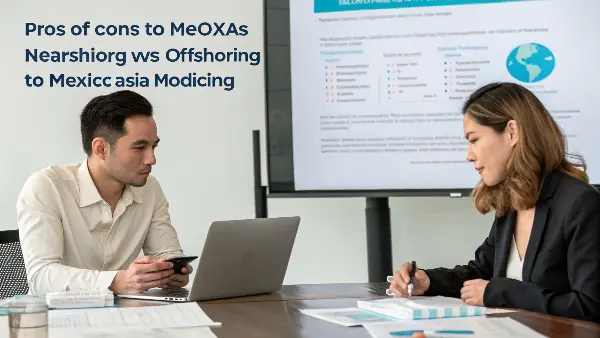
That’s the short answer, but I know you need more than that to make a project-defining decision. In my decades in this business, I’ve seen companies succeed and fail based on this very choice. The sticker price of a mold is just one part of the story. The real cost—and the real benefit—is hidden in the details. Let’s break down the real-world factors you need to consider before you commit.
What Are the Core Benefits of Nearshoring Your Molds to Mexico?
Are you struggling with the long lead times and communication barriers that come with Asian suppliers? These issues disrupt your production schedule and add a lot of stress. Nearshoring to Mexico brings your manufacturing closer, which immediately simplifies your logistics and communication channels.
The main benefits of nearshoring to Mexico include dramatically shorter supply chains, reduced shipping costs and times, and much better collaboration because of aligned time zones. This closeness allows for better quality control, faster problem-solving, and more agility for your injection molding projects.
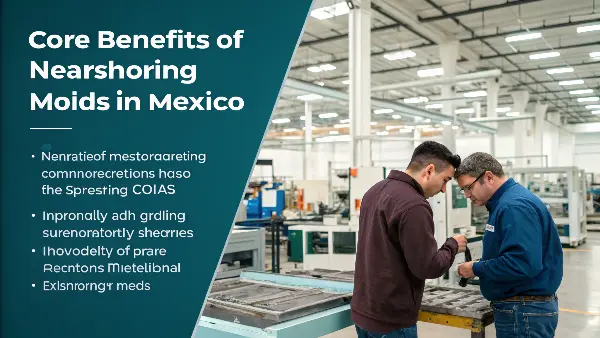
When I talk to project managers like you, their frustrations with distant offshoring often boil down to three things: time, communication, and control. Nearshoring to Mexico directly addresses all three. Over the years, I’ve watched countless clients breathe a sigh of relief after making the switch.
Proximity and Speed: The Geographic Advantage
The most obvious benefit is geography. Shipping a multi-ton steel mold from Asia to North America is a long and expensive journey. It can take weeks, sometimes months, on a container ship. Then it has to clear customs. A truck can deliver that same mold from a factory in Monterrey, Mexico, to a facility in Texas in a day or two. This speed drastically cuts down your lead times. I remember a client who needed an urgent modification to a mold. We were able to get the tool back to our shop, make the changes, and return it in under a week. From Asia, that same process would have taken over a month and cost a fortune in air freight.
Bridging the Communication Gap
Time zones are a bigger deal than most people think. Trying to coordinate a video call with a team that is 12 hours ahead is a nightmare. You’re either staying up late or they are getting up early. Communication becomes limited to a short window each day, and urgent problems can sit unresolved for 24 hours. With Mexico, we share similar business hours with most of the U.S. and Canada. When a problem comes up, we can just pick up the phone and solve it in real-time. This makes the entire project run smoother.
A Deep Dive into Mexico’s Skilled Workforce
Some people still have an outdated image of Mexican manufacturing. The reality is that Mexico has a highly skilled and experienced industrial workforce, especially in areas like injection molding and automotive manufacturing. The country has invested heavily in technical education and has built up world-class industrial parks.
| Factor | Offshoring to Asia (e.g., China) | Nearshoring to Mexico |
|---|---|---|
| Shipping Time | 4-6 weeks by sea | 1-5 days by truck/rail |
| Communication | 12-15 hour time difference | 0-2 hour time difference |
| Site Visits | 15+ hour flight, complex visa | 2-5 hour flight, easy access |
| Agility | Low; slow to respond to changes | High; can adapt quickly |
What Is the Single Biggest Supply Chain Benefit of Nearshoring Over Offshoring?
Are unpredictable shipping delays and soaring freight costs from Asia eating into your profits? These long, fragile supply chains introduce massive risk into your business. Nearshoring creates a resilient, agile supply chain that protects you from global disruptions and keeps your production line moving.
The most significant supply chain benefit of nearshoring over offshoring is resilience. Shorter distances mean less exposure to shipping crises, port congestion, and political tensions. This leads to more predictable lead times, lower inventory carrying costs, and the ability to respond to market changes much faster.
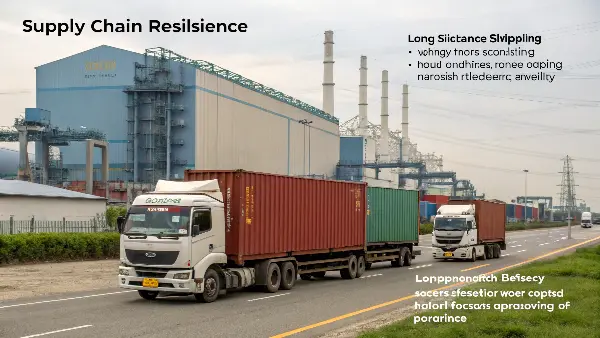
If the last few years have taught us anything, it’s that a long supply chain is a brittle supply chain. A single container ship stuck in a canal or a shutdown at a major port can throw a company’s entire year off track. I’ve heard horror stories from colleagues who had millions of dollars of product stuck on the water for months. When your supplier is just across the border, you insulate yourself from much of that global chaos.
De-Risking Your Operations
Think of your supply chain as a line of communication. The longer it is, the more points of failure exist. Shipping from Asia involves multiple handoffs: factory to truck, truck to port, port to ship, ship across the ocean, ship to destination port, port to customs, customs to truck, and finally, truck to your facility. A problem can happen at any of these stages. Nearshoring simplifies this dramatically. Often it’s just factory to truck to your door. This reduction in complexity is a powerful way to de-risk your entire operation.
The True Cost of a Product: Beyond the Factory Gate
Smart project managers look at the Total Cost of Ownership (TCO), not just the unit price from the factory. Offshoring might offer a lower price per part, but the TCO is often much higher once you add everything up.
| Cost Factor | Offshoring (Asia) | Nearshoring (Mexico) |
|---|---|---|
| Freight | High & Volatile | Low & Stable |
| Tariffs/Duties | Can be high | Often zero (USMCA) |
| Inventory | High (must hold more) | Low (Just-in-Time) |
| Quality Control Travel | Very High | Moderate |
| Risk Mitigation | High (currency, politics) | Low |
| Total Cost of Ownership | Often Higher | Often Lower |
Agility in Action: Responding to Market Demand
Today’s markets change fast. Imagine your product suddenly takes off, and you need to ramp up production immediately. If your molds are in Asia, it will take you months to get new tools made and shipped. With a nearshore partner in Mexico, you can respond much more quickly. This agility is a competitive advantage. It allows you to capture market opportunities that your slower competitors will miss.
Why is Nearshoring to Mexico a Strategic Advantage for U.S. Companies?
Are you worried about protecting your designs and technology when you manufacture overseas? Having your intellectual property stolen can destroy your competitive advantage and your brand’s reputation. The USMCA trade agreement gives you strong IP protections when you choose to nearshore your projects to Mexico.
For American companies, the main advantage of nearshoring to Mexico is the United States-Mexico-Canada Agreement (USMCA). This trade pact gives you major benefits, including tariff-free trade for many goods, strong intellectual property (IP) protections, and simpler customs procedures. This reduces both your costs and your risks.
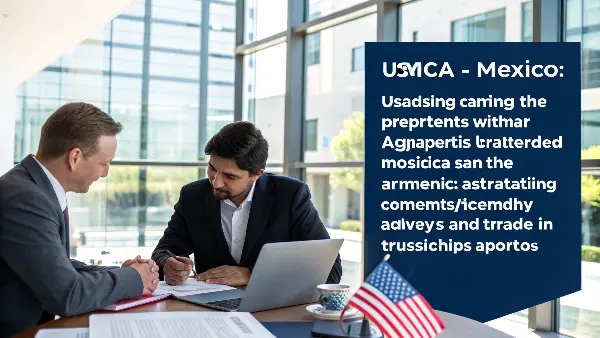
I talk with many U.S.-based entrepreneurs and project managers. Their number one fear about manufacturing abroad is often IP theft. We’ve all heard the stories. You send your CAD files to a factory, and six months later you see a cheap knock-off of your product for sale online. This is where working with a Mexican partner under the protection of the USMCA becomes a massive strategic advantage. It’s not just a trade deal; it’s a security blanket for your business.
Unpacking the USMCA Advantage
The USMCA replaced NAFTA, and it was specifically updated to deal with the realities of modern business. For injection molding, this is huge. Most molds and molded parts we produce for our U.S. clients can move across the border completely tariff-free. This is a direct saving to your bottom line that you often don’t get when importing from Asia, where you can get hit with unexpected tariffs. It makes budgeting more predictable and protects your margins from sudden policy changes.
Protecting Your Most Valuable Asset: Intellectual Property
This is the big one. The USMCA has one of the strongest IP protection chapters of any trade agreement in the world. It requires Mexico to have robust laws and enforcement mechanisms for patents, trademarks, and industrial designs. This means that if you have an issue with IP infringement, you have a clear legal path to resolve it within a system that is harmonized with U.S. law. It’s much easier to enforce a contract or defend a patent when both countries operate under a similar framework. This gives our clients the confidence to bring their most innovative and sensitive projects to us.
A More Stable and Predictable Trade Environment
Beyond the specific rules, the USMCA creates a stable and integrated North American market. Business and legal practices are more aligned. The regulatory environments are more familiar. This makes everything from negotiating contracts to resolving disputes simpler and more transparent. You’re not navigating a completely foreign system. This stability is invaluable for long-term planning and investment, turning a simple supplier relationship into a true strategic partnership.
What Specific Incentives Does Mexico Offer for Nearshoring?
Do you think that setting up manufacturing in a new country sounds too complicated and expensive? The paperwork and initial investment costs can seem like a major barrier. But Mexico actively encourages foreign investment with programs specifically designed to make it simple and cost-effective for you.
Mexico offers several powerful nearshoring incentives, most notably the IMMEX (Maquiladora) program. This lets foreign companies import raw materials and equipment tax-free for manufacturing, as long as the final product is exported. States also offer tax breaks, infrastructure support, and workforce training to attract investment.
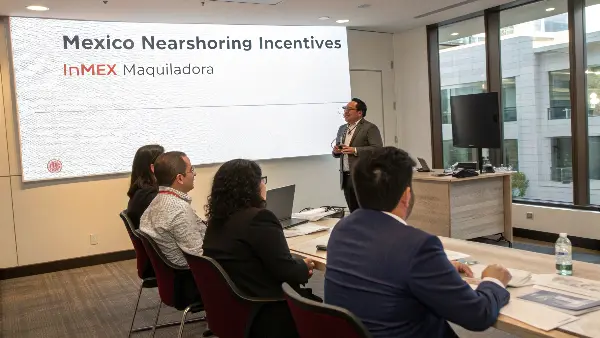
For decades, Mexico has worked to make itself an attractive destination for foreign manufacturing. It’s not just about being close to the U.S. The government has put concrete, money-saving programs in place to draw companies in. These incentives are not just small perks; they can fundamentally change the cost structure of your project, making Mexico a clear financial winner.
The IMMEX Program: A Game-Changer for Manufacturers
The IMMEX program is the cornerstone of Mexico’s manufacturing strategy. In simple terms, it allows a company like ours to operate as a "maquiladora." We can import your raw materials (like specific steel grades for a mold or plastic resins) and equipment into Mexico without paying the usual 16% Value-Added Tax (VAT) or other import duties. The key condition is that over 90% of the finished goods we produce with those materials are exported out of Mexico. For our clients, this is a huge financial win. It means the cost of your materials isn’t inflated by taxes, keeping the final price of your mold or parts more competitive.
Tapping into Mexico’s Industrial Ecosystems
Mexico has intelligently developed specific industrial clusters in different regions. These aren’t just collections of factories; they are complete ecosystems with everything a manufacturer needs. You’ll find skilled labor pools, local suppliers for secondary components, logistics experts, and maintenance services all in one area. This reduces your risk and simplifies operations because the support network is already built.
| Industrial Region | Key Industry Focus | Why It Matters for Your Project |
|---|---|---|
| Tijuana / Baja | Electronics, Medical Devices | Proximity to California; highly skilled in precision assembly. |
| Monterrey / Nuevo León | Automotive, Appliances | A heavy industry hub with top engineering talent. |
| Querétaro / Bajío | Aerospace, Automotive | Central location with a world-class logistics network. |
| Juárez / Chihuahua | Automotive, Electronics | Deep integration with the Texas manufacturing corridor. |
Government Support and Financial Perks
On top of the federal IMMEX program, individual Mexican states are in competition to attract businesses. They often roll out the red carpet for foreign investors. This can include attractive deals like temporary exemptions from state payroll or property taxes, funding for training new employees to your specific standards, or investments in local infrastructure like roads and utilities to support a new plant. When you partner with an established Mexican manufacturer, you benefit from the programs and relationships we have already built.
Conclusion
While Asia’s low labor costs are appealing on the surface, a deeper analysis reveals a different story. Nearshoring your injection molding to Mexico often delivers a lower total cost, greater supply chain security, and better protection for your intellectual property, making it the smarter long-term choice.
